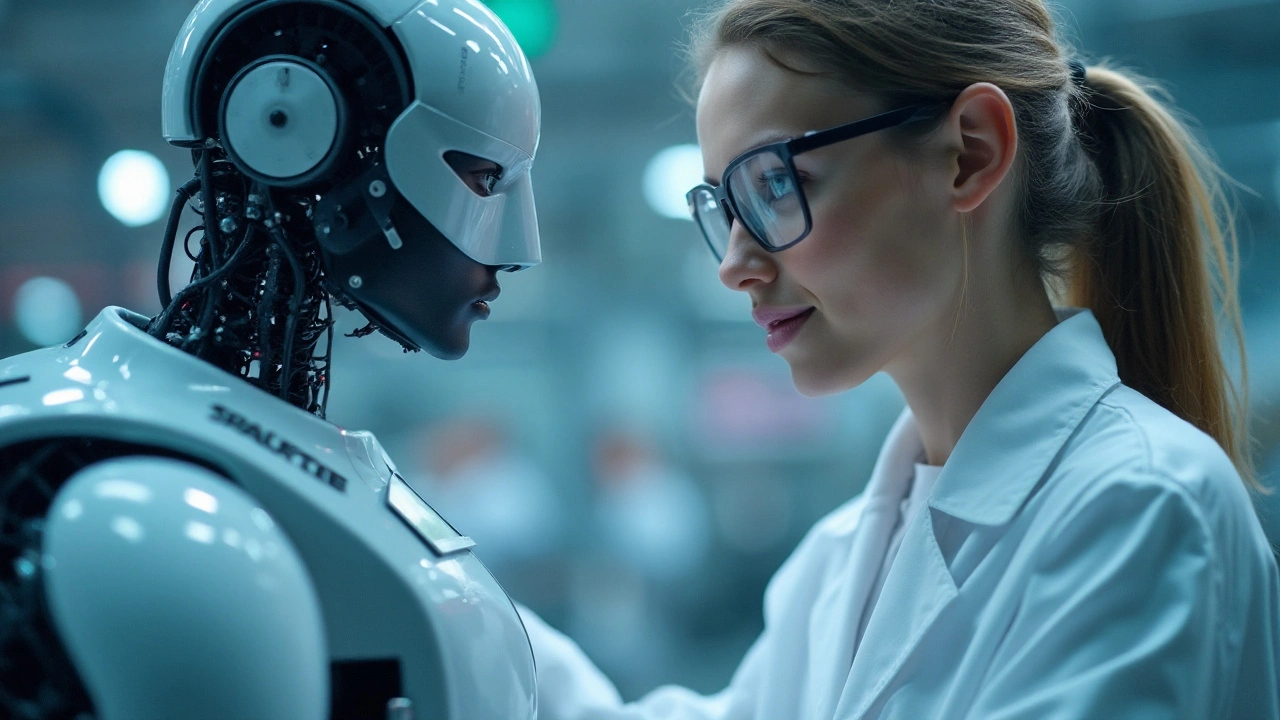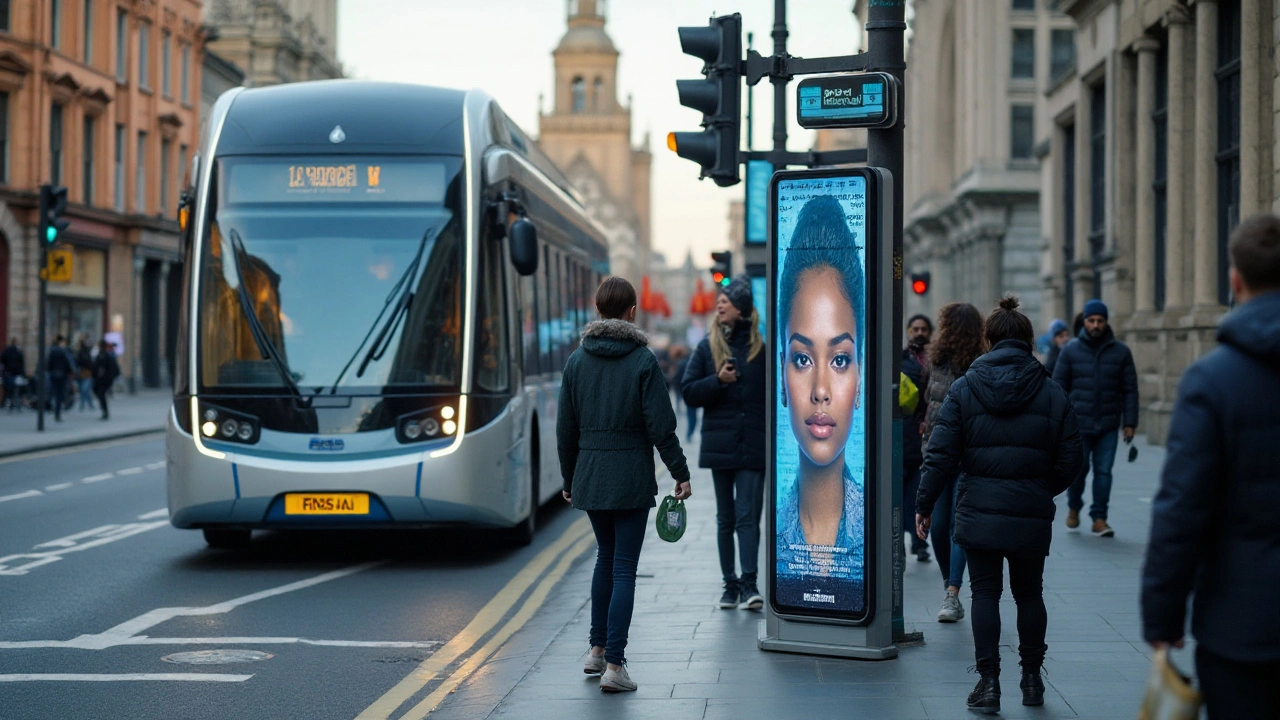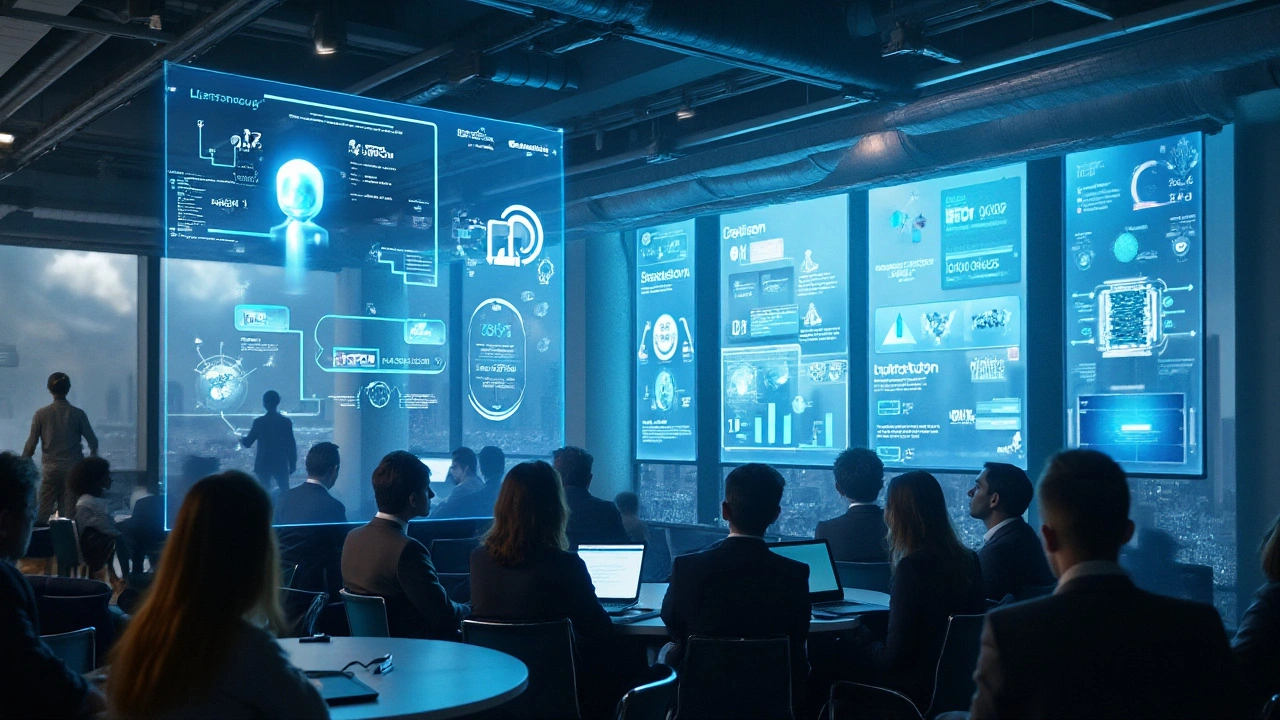AI Tricks: The Future of Digital Innovation

Artificial intelligence is not just a buzzword; it's a revolution that's reshaping our world. With its roots deeply embedded in science fiction, AI has made significant strides, turning what was once imaginary into reality.
Understanding how AI functions and its myriad applications can seem overwhelming. But fear not, because we will break it down in a way that's both engaging and easy to digest. From helping businesses automate routine tasks to creating art, AI's capabilities are vast.
Imagine a world where your devices predict your preferences, your car drives you to work, or a chatbot helps you shop for gifts. These aren't just dreams – they are real, and they're happening now thanks to AI.
Stay tuned as we delve into the exciting realm of AI tricks, exploring practical applications, innovative projects, and the future of digital innovation. Whether you're a tech enthusiast or a business looking to stay ahead, this journey into AI will provide you with valuable insights and tips.
Understanding AI Tricks
Artificial intelligence has a captivating way of integrating itself into our daily lives. From voice assistants like Alexa and Siri that have become household names to chatbots that help you navigate websites, AI is everywhere. But what really happens behind the scenes to make these digital assistants so helpful?
AI tricks often involve techniques like machine learning, neural networks, and natural language processing. These technologies allow AI to learn from data, recognize patterns, and even make decisions. One famous example is Google's AlphaGo, which used machine learning to master the game of Go, beating world champions at their own game.
Machine learning, a key component of AI, works by feeding vast amounts of data to algorithms. These algorithms then create models that can predict or classify new information. For example, Netflix uses these models to recommend shows based on your viewing history. It's like having your personal TV guide that understands what you enjoy watching.
Neural networks, inspired by the human brain, consist of layers of interconnected nodes. These networks analyze data in a way that's somewhat similar to how we think. This technology is behind the magical ability of AI to recognize faces in photographs or detect fraudulent activities in financial transactions. It's all about teaching machines to understand complex patterns and make decisions based on that understanding.
"Artificial intelligence is the new electricity. Just as electricity transformed almost everything 100 years ago, today I actually have a hard time thinking of an industry that I don't think AI will transform in the next several years." - Andrew Ng
Another fascinating aspect is natural language processing (NLP), which allows AI to understand and generate human language. This is the science behind translation apps, voice search, and virtual assistants. NLP helps machines understand context, sentiments, and nuanced meanings, making conversations with AI more natural and human-like.
Automation is also a significant benefit of AI. Businesses use AI-driven tools to automate repetitive tasks, enhance customer service, and improve decision-making processes. For example, chatbots can handle customer queries around the clock, providing instant responses and freeing up human agents for more complex tasks.
It's interesting to note that AI also plays a role in creative fields. Artists use AI to generate music, create visual art, and even write poetry. This ever-evolving technology is pushing the boundaries of what we once thought possible, blending science and creativity in extraordinary ways.
Understanding these AI tricks gives us a glimpse into how deeply AI is woven into the fabric of our digital world. By harnessing these technologies, we can look forward to a future where AI continues to enhance our lives, making the impossible seem possible.

Practical Applications
Artificial Intelligence is transforming various sectors, revolutionizing the way we live and work. One of the most prominent applications of AI tricks is in the realm of customer service. Chatbots, for instance, have become ubiquitous in online shopping. These smart virtual assistants handle multiple inquiries at once, providing quick solutions and freeing human agents to tackle more complex issues.
Healthcare is another sector that has embraced AI with open arms. AI-powered diagnostic tools are making early detection of diseases more accurate. For example, IBM's Watson Health can analyze vast amounts of medical data to assist doctors in diagnosing patients and recommending treatments. This technology shortens the time required for diagnosis, which can save lives.
In the world of finance, AI is improving fraud detection. Machine learning algorithms scrutinize transactions in real time, identifying unusual activities that might indicate fraud. This proactive approach significantly reduces financial losses. Meanwhile, AI-driven investment tools offer personalized advice and portfolio management, helping investors make better-informed decisions.
The automotive industry is also a major player in AI innovation. Self-driving cars, like those developed by Tesla, use advanced AI systems to navigate roads, avoid obstacles, and ensure passenger safety. These vehicles aren’t just a glimpse into the future; they're on the roads today, changing the way we think about transportation.
According to Sundar Pichai, CEO of Google, 'AI is one of the most important things humanity is working on. It is more profound than… electricity or fire.'
Education is another field where AI is making waves. Adaptive learning platforms, powered by AI, personalize education by providing customized learning experiences. These platforms analyze student performance and adjust the difficulty of lessons accordingly, ensuring that each student progresses at their own pace.
Retail businesses use AI for inventory management. AI-driven systems predict consumer demand more accurately, helping stores manage their stock levels effectively. This ensures that popular products are always available, while slow-moving items are minimized, increasing profitability.
Moreover, AI is playing a role in agriculture through “smart farming.” AI applications using drones and sensors monitor crop health, soil conditions, and weather patterns. This data helps farmers make informed decisions about planting, watering, and harvesting, leading to increased yields and sustainable practices.
Entertainment also is not left behind in the AI revolution. Streaming services like Netflix use AI to recommend shows and movies based on users’ viewing history. This personalization keeps users engaged and coming back for more, showcasing how AI can enhance user experience in entertainment.
As these examples show, AI is more than just a technological trend; it's a crucial component of modern innovation. The practical applications of AI are numerous and impact nearly every aspect of our daily lives. By leveraging these AI tricks, industries can improve efficiency, enhance customer experiences, and drive significant advancements.

Innovative AI Projects
When it comes to AI's most groundbreaking applications, the realm of innovative projects stands at the forefront. These projects push the boundaries of what's possible, merging creativity with cutting-edge technology. One notable example is the AI-generated art that has been making waves lately. Algorithms like DeepArt and DALL-E are capable of producing stunning pieces of art just based on textual descriptions. Here, creativity meets computation to craft works that are both fascinating and groundbreaking.
Another area where AI is truly shining is in the field of healthcare. AI-driven diagnostic tools, like IBM’s Watson, are paving the way for early and accurate disease detection. This not only saves time but could also be life-saving. Efforts like these showcase AI's potential to revolutionize industries and improve quality of life. Imagine a world where diseases are diagnosed swiftly and accurately, reducing patient stress and increasing survival rates.
In environmental conservation, AI is making significant contributions. Projects like the Rainforest Connection use machine learning to analyze audio data from the rainforests. These systems can detect the sounds of chainsaws or trucks, helping to combat illegal logging activities. The implications of such technology are vast, offering a new way to protect some of the most vulnerable ecosystems on our planet. In turn, this helps secure biodiversity and fight climate change, showing how digital innovation can aid in greener, more sustainable practices.
AI in Business
But let’s not forget the corporate world, where AI is making businesses more efficient and responsive. One interesting project is the development of AI-driven customer service bots that simulate human interaction with astonishing accuracy. Companies like Zendesk and Salesforce are using these bots to elevate customer service, drastically reducing wait times and improving customer satisfaction. It's fascinating to see how businesses are leveraging AI tricks to stay ahead in a competitive market.
Another intriguing business application is predictive analytics. Utilizing algorithms to predict customer behavior, companies like Amazon and Netflix can recommend products or content tailored to individual preferences. This not only keeps customers engaged but also boosts sales. It's an example of how digital innovation, powered by AI, has profound effects on consumer experience and business growth.
"Artificial Intelligence is transforming the way we interact with the digital world, bringing a level of efficiency and personalization never seen before," said Satya Nadella, CEO of Microsoft.
AI in Everyday Technology
Finally, let’s consider how AI is integrated into everyday technology. Smart home devices like Amazon's Alexa and Google Home are becoming increasingly common. These gadgets use natural language processing to understand user commands and perform various tasks. Whether it's turning off lights, setting reminders, or playing your favorite tunes, these devices are examples of AI making life more convenient. Interestingly, these innovations were once the stuff of science fiction but are now integral parts of our daily lives.
The future holds even more exciting possibilities. With advancements in AI tricks, what we now consider high-tech will soon become standard, leading to innovations we can barely imagine today. This evolving landscape of digital innovation is not just a glimpse into the future; it's a reality unfolding before our eyes. AI tricks are indeed shaping what lies ahead, and the possibilities seem almost endless.

Future Prospects
When we look at the future of artificial intelligence, we're peering into a world that continues to expand and redefine possibilities. One of the most exciting aspects of AI is its potential to enhance creativity and innovation in unexpected ways. Imagine a world where AI not only assists in mundane tasks but also participates in creating art, writing scripts, and composing music. This isn't science fiction; it's gradually becoming a reality. Companies like OpenAI have already developed models that can generate human-like text, aiding writers, developers, and artists in their creative processes.
This fusion of AI with everyday life will become even more pronounced as technology advances. New machine learning models can predict trends with remarkable accuracy, helping businesses make informed decisions. Take healthcare, for example. AI is on the cusp of diagnosing diseases with better precision than human doctors, enabling earlier detection and better patient outcomes. We're also seeing AI being used to personalize education, tailoring curricula to fit individual learning styles and needs. The future of AI is not just digital; it's deeply personal, touching every aspect of our daily lives.
Another fascinating future prospect is AI's role in driving sustainable practices. From optimizing energy consumption to predicting environmental changes, AI can play a pivotal role in combating climate change. Smart grids powered by AI can manage energy use more efficiently, reducing wastage and lowering costs. Drones and satellite imagery, powered by AI analytics, can monitor deforestation and track wildlife populations, helping conservation efforts. As these technologies evolve, they hold the promise of making our world cleaner and greener.
There are certainly challenges that come with this rapid technological advancement. Ethical considerations are at the forefront, debating the responsibility we have when deploying autonomous systems. There is a growing need for regulations to ensure AI is used transparently and fairly. These discussions are crucial as they guide the development of AI in a direction that benefits society as a whole.
AI ethics expert Timnit Gebru once said, "The development of AI must prioritize human rights and equity to foster a fairer future." This perspective is echoed by many in the field, emphasizing the importance of responsible innovation.
Finally, the job market is set to undergo significant changes due to AI. While there will be displacement in some sectors, new opportunities will also arise. Training and re-skilling workers for AI-augmented roles will become essential. A study by PwC estimated that AI could contribute up to $15.7 trillion to the global economy by 2030, highlighting the immense economic potential. The key lies in adapting and evolving with these changes. By understanding where AI is headed, we can better prepare ourselves for a future where digital innovation is the norm.